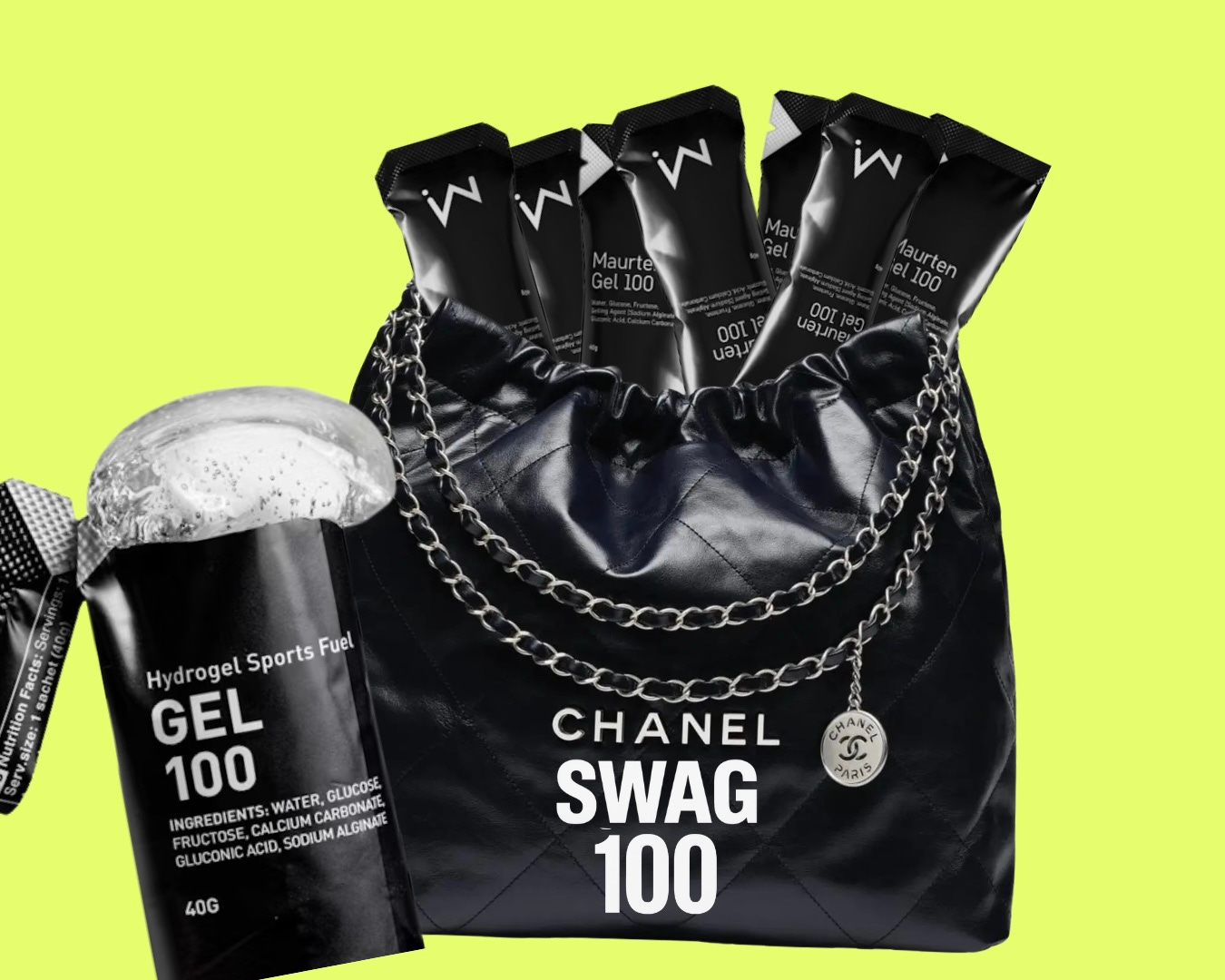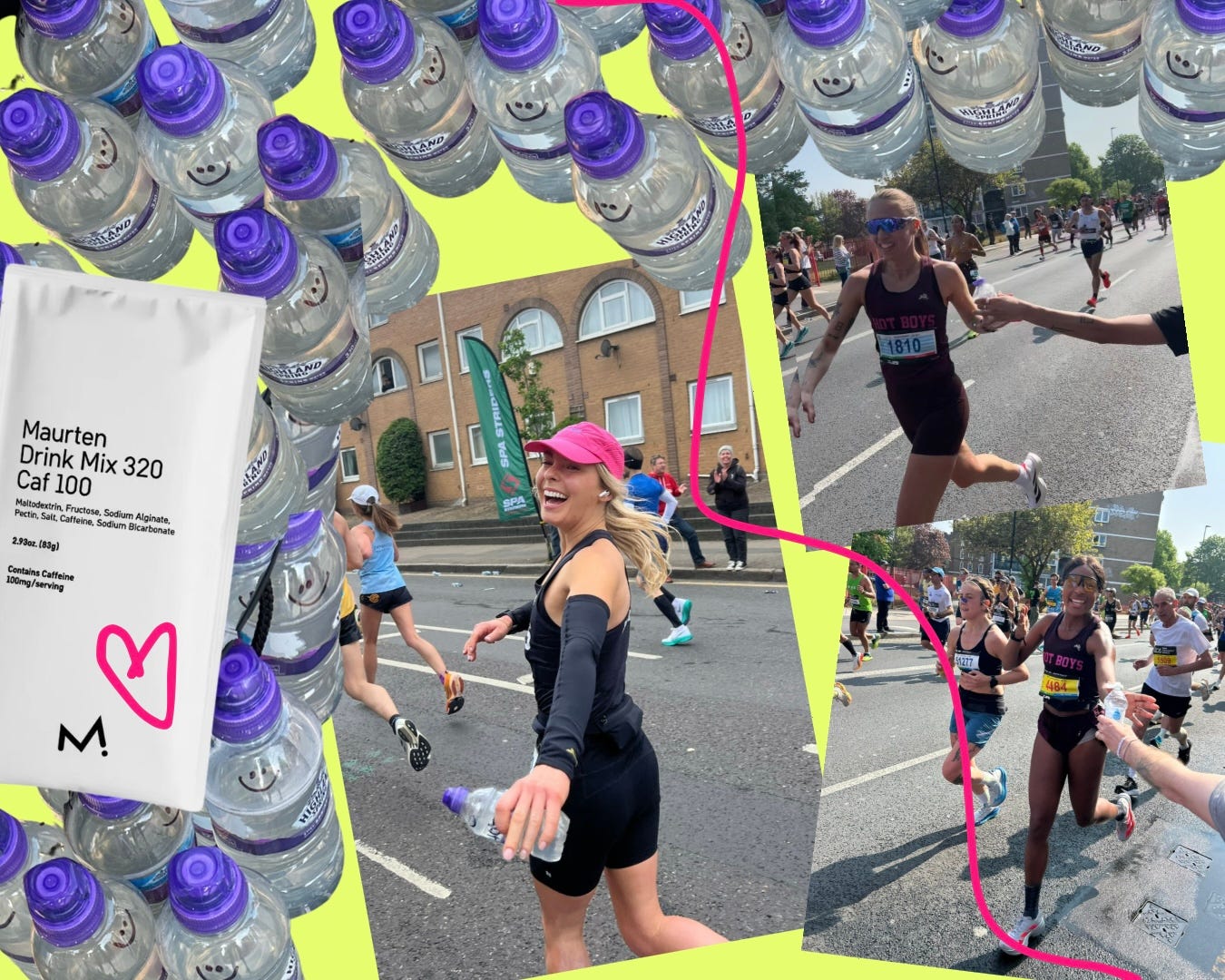It’s been uncharacteristically sunny in the north of England this week, and I’m technically in week one of fall marathon training. By technically, I mean that all I’ve just done is easy jogging and I skipped my long run. Try again next week.
Perhaps it’s because I haven’t (yet) ticked off the shopping list of things I buy before a new training block starts, and which put me in that frame of mind. Typically, it would include new shoes, a training plan and a bulk-buy of gels and carb bars from Maurten to sustain me on my long runs. Are you really marathon training if you don’t have a cupboard full of Maurten?
Arguably, it’s not the training itself that makes you face the reality of a forthcoming endurance event — whether an Ironman, an ultra, or whatever. It’s having your kitchen overrun by big boxes of gels that you have to look at every time you want a snack.
Carbohydrate gels — consumed in endurance sports and usually recommended every 30-45 minutes during to sustain the effort — have long been the go-to race accessory. The gel market was generally dominated by big corporate brands with artificial ingredients and brash branding, until Maurten launched in 2017 and offered the antithesis. Maurten’s are now the must-buy. The Swedish company sells a million sachets a week. A million. Every week.
The venture capitalists are moving in, with Maurten raising $23.8 million in funding in 2024. The global sports fuel market was worth $683 million in 2024, and is estimated to hit $1.31 billion by 2031. There’s money to be made.
Competition is now starting to heat up, with new, niche players getting into the gel game. It’s similar in vein to when the indie, design-led running labels like Satisfy and District Vision got traction as disruptors to Nike and Adidas. We’re entering the edgy gel era.
Feed me more info
It’s not just that brands are launching, it’s that they look a bit similar to Maurten. There’s a design influence at play.
New in the space is Marchon, the British sports/training/supplements brand which recently launched its endurance fuel gel with 30g carbs. Truefuels launched in June, led by British Olympic triathlete Alistair Brownlee. Cadence, the now-cult electrolyte brand favoured by marathoners who wear Represent 247 and also train for Hyrox, recently dropped its new 40g carb bars. Hyrox itself even has some skin in the game: Hyrox gels are co-branded with My Protein. (The Hyrox founders are doing a really good job at turning an event series into a brand via products.) There’s also Styrkr, which brand-wise feels a little close to Maurten IMO but its gels and rice bars in particular are very good; I really like its chunkier cocoa rice bars, but they do contain a lot more ingredients and emulsifiers.
Then, this week, Minted New York debuted its collection of three gels and electrolytes. The menswear brand ordinarily makes actual clothes, like blue canvas utility jackets (£245) and leather cardholders (£83). Releasing boxes of six berry-flavoured gels for £16 alongside these feels a little… jarring.
When menswear brands start selling marathon accessories (including race socks) alongside fashion accessories… The floodgates are set to open.
Gels as influencers, really?
Context is everything. ‘Endurance’ has not yet hit peak trend. The space is continually being amplified by crazy guerrilla events like Go One More, a last one standing ultra in Texas, where people ran one 6.7km loop on the hour, every hour, for as long as it took for everyone else to drop out… which was 56 hours. These races are forever trying to outdo the last in terms of extremities; the number of people marathoning is also continuing to skyrocket.
People are hungry for more. And they need gels to do it with.
I interviewed Olof Sköld, Maurten’s chief executive and co-founder, in 2023, and he told me the company was on track to be Sweden’s fastest growing company by 2024. Think about that for a second. This is the country that birthed IKEA, H&M, Volvo and Spotify. Gels are big business.
So why is Maurten so popular?
Type Maurten into Google, and this is the most popular related search. Kudos to the team for creating a brand so intriguingly cult-like that people actually type this out.
Here’s why it’s so popular.
Maurten turned carb-fuelling into a trendy pursuit when it launched in 2017. The company effectively spun this sports essential into an aesthetic item via its slick brand identity, its monochromatic packaging, bold typeface and a polished Instagram account. It’s a brand for design types; the Apple of sports fuel.
Its photography in particular was pivotal in shifting the needle, with black and white, heavily contrasted shots that followed a very particular moodboard-like format that appears considered and cohesive. Compare that to the bright, colourful, chaotic commerciality of the major sports fuel brands today…someone call a graphic designer for the big dogs, asap.
Maurten sponsored Eliud Kipchoge et al, so it became associated with elite status. Maurten’s signature M, embossed on everything from its cardboard packaging to its gels and bars, became an ‘if-you-know’ insignia, like Chanel’s interlocking Cs or Gucci’s double Gs. Maurten’s limited-edition water bottles, sold at the major marathons, have become a go-to bit of merch that people love to collect. How many water bottles is too many?
Think of how Satisfy’s aesthetic is now dominant across running and sports in general, or how Gore-Tex (a patented waterproof fabric) became an actual ‘brand’ when gorpcore wearers started snapping the logo in their fits of the day. Maurten is the equivalent in terms of influence for gels. It’s the first fuel brand with enough cultural currency to cut through. Its revenues last year were around £31 million.
Brand alignment
District Vision; Bandit; Satisfy; Soar. All these brands use Maurten in their product shots as a means to showcase pockets; District Vision even created a co-branded race tight, with 6 gel pockets designed to perfectly fit the dimensions of a Maurten. These seemingly small touch points are undoubtedly a signal to shoppers.
Customers also photograph those M-branded gels as a status symbol. They’re a totem of modern sports affluence because, at £2.80 a gel, they have a premium price tag. You see them in the race flatlays or littered on the floor in punkish fashion. They signal something about you. Mainly, that you’re intentional, invested and you know what’s what.
I asked Sköld about the prices. He said he found it interesting people perceived Maurten to be expensive in the context of marathons especially, when race bibs and shoes can cost upwards of £200 each. The fuel — the thing that will actually power you through it — costs “less than £30 for the race”, he said. (Generally, you need 6-7 for a marathon.)
Images: District Vision and Bandit Running
It’s style and substance
What I find most interesting is that Maurten didn’t intend to be cool. It just aimed to be better. Sköld, one of three co-founders, told me that just seven years ago, there were “buckets of sand at the end of marathons because people would so often throw up from stomach issues” from the typical gels. Maurten launched with a minimal-ingredient solution that is GI friendly. It meant athletes could tolerate taking on a higher percentage of carbs – 120 grams per hour as opposed to 20-24 grams from the traditional gels — so it was proven to work. Its street cred went up when it fuelled Kipchoge in becoming the fastest man in the world.
Maurten is made and tested in its own lab in Sweden, to give control over the entire supply chain; the company employs a team of scientist assassins in its pursuit of innovation. In 2022-2023, it couldn’t produce gels fast enough to meet demand. Some shops were even ordering Maurten from other shops, and paying full price to do so, just to have the clout of being in stock, said Sköld.
Traditional gels derive from sugar syrups, which are artificially flavoured. They’re bad for your teeth and your tum. “No one wants to have banana flavour sticking in your mouth for hours,” he said. Actual ick.
Special mention to Maurten’s soluble Drinks Mix, which I’ve neglected in all this talk about gels. I like them as part of a carb load, rather than eating so much you wind up feeling sick. My favourite pre-race ritual is a bottle of 320 at bedtime, mixed with cherries and berries cordial. And another en route to the start line. My running group Hot Boys Athletics also fuel us on-course with drinks mix top-ups in little bottles.
Where do we go from here?
Maurten started as David, but it’s becoming a Goliath. Maurten has replaced SIS as the on-course fuel provider of the Berlin, Chicago and Boston marathons and the Ironman 100. No shy feat considering those events are backed by huge amounts of corporate sponsorship deals. If Maurten is the go-to choice, at what point will it be as ubiquitous as Nike? It creates a gap for other challenger upstarts like Marchon.
If we compare it to the electrolyte and protein boom, this is just the beginning. After seeing that TrueFuels gels contain magnesium, I’m interested to see whether electrolyte brands will show up here. I think we’ll see branded gels from big brands like Nike at big moment events. I imagine it will be unbranded gels re-wrapped with a tick rather than Nike ever getting into the fuel game for real, but this is Nike, so never say never. Many fashion labels like Aime Leon Dore have gotten into coffee and cafe culture; will gels be the sports brand equivalent?
There’s a cost though, in research and development and betting on consumer trust. It’s one thing to sell a coffee or a pair of running socks. It’s quite another to create a digestible, performance-based product.
Just as we’re seeing more collabs/limited edition race shoes, I think we could start to see gel collaborations as the ultimate signal and IYKYK race accessory. Brands tapping the expertise of fuel sources and repackaging it. Y3 Adidas Pro 4s on your feet; Cadence x Represent 247 gel in your pocket, kinda vibe.
What else?
Carbs are hot right now. And something else that’s been on my radar is the number of snack bars launching to the market that contain dates. Yes, these shrivelled looking stone fruits have been rebranded as a must-eat ingredient. Simply’s chocolate fudge date bars have 35g carb but taste like a candy; Cadence’s bars are made from dates; Joolie’s dates are in trendy hotel minibars like Palm Heights in Grand Cayman; many gyms now sell snackable date balls at the counter. Nutty Belly Gal offers spreadable dates as a new-age peanut butter. Marks and Spencer’s new chocolate date bars are legit. Veloforte’s gels are even made from dates.
Oats are so last season. Dates are in for the clean-eating, carb loading queens. One to remember for when the gel/oat/pasta/bagel fatigue sets in. Innovators be innovating.










Maurten 320's pretty much got me through the recent Fred Whitton cycle sportive without having to spend too long at the feed ststions, It was the post event Inch's cider that made all the effort seem worthwhile though 👍
Loved this! At Tracksmith we started using Maurten in our product shots around 2019, maybe? We had the same gels floating around the photo studio for years.